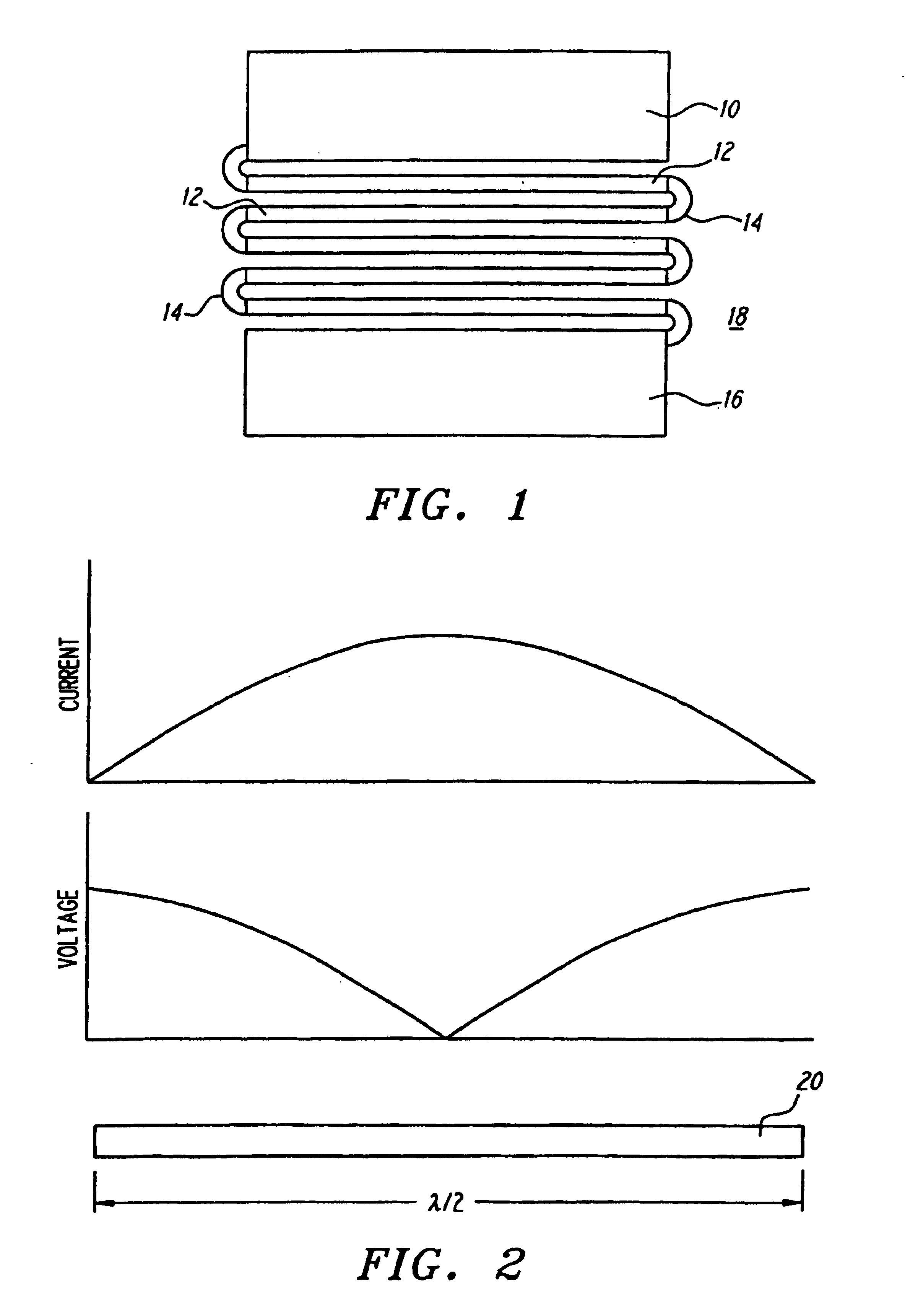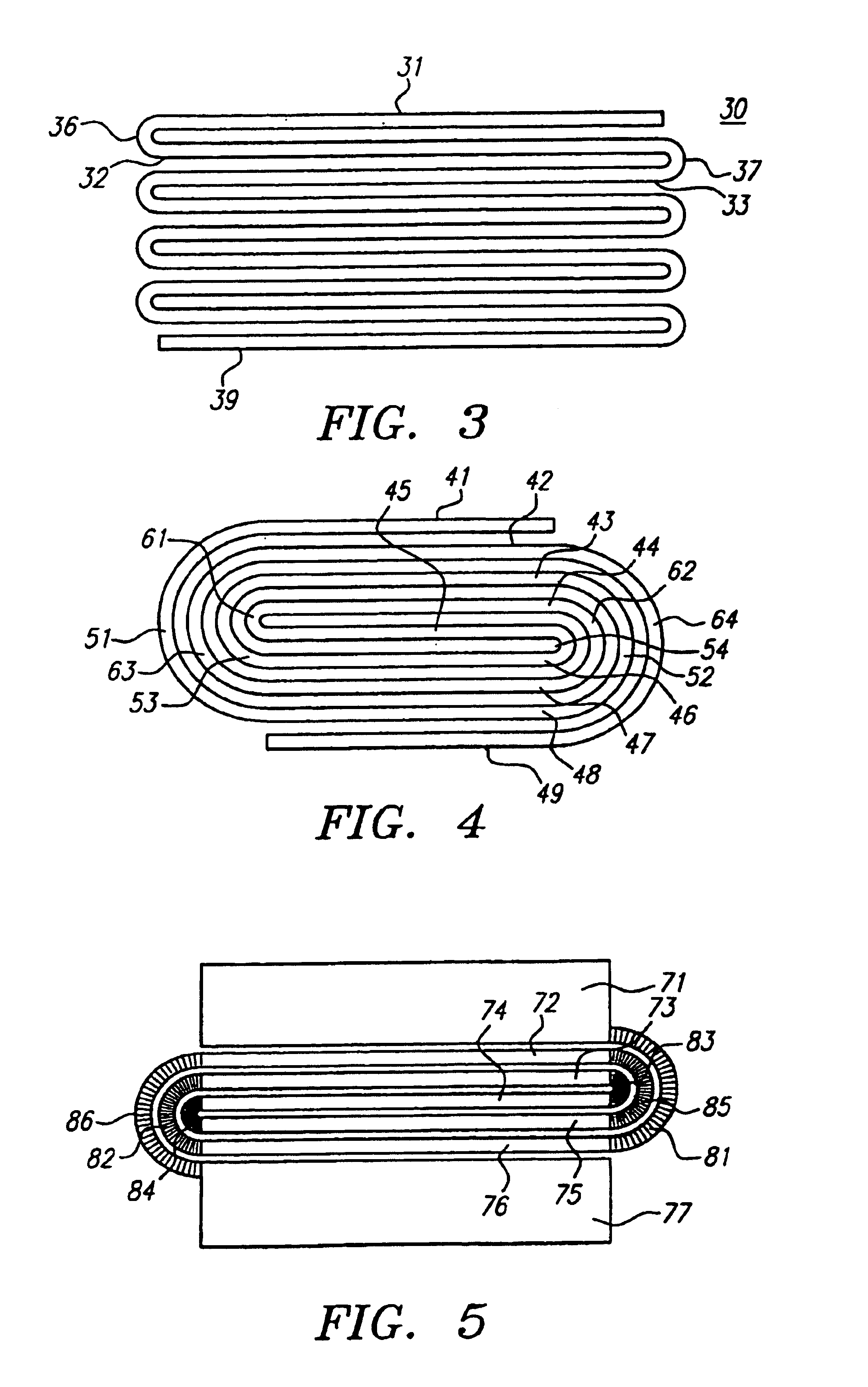High temperature superconducting spiral snake structures and methods for high Q, reduced intermodulation structures
a superconducting spiral snake and high temperature technology, applied in the direction of superconducting magnets/coils, magnetic bodies, waveguides, etc., can solve the problems of large circuit to circuit differences, filter over a foot in length, rods can become quite large, etc., to reduce intermodulation effects and reduce peak current densities
- Summary
- Abstract
- Description
- Claims
- Application Information
AI Technical Summary
Benefits of technology
Problems solved by technology
Method used
Image
Examples
Embodiment Construction
[0048]FIG. 1 shows a plan view of a quasi-lumped element resonator (QLE) having enlarged input and output pads. An input pad 10 (the designation of input and output being arbitrary, and reversible) and an output pad 16 are disposed on opposite sides of a serpentine or zig-zag resonator region 18. Generally parallel long runs 12 are disposed substantially parallel to the longer edge of the input pad 10 and output pad 16. A first long run 12 adjacent to the input pad 10 is connected to a first turn 14 which electrically couples the input pad 10 to the first long run 12. Adjacent long runs 12 are then coupled to their nearest neighbor long runs 12 by corresponding turns 14.
[0049]The input pads 10 and output pad 16 serve to increase the equivalent capacitance to ground relative to a structure having no or smaller input and output pads. Preferably, the amount of equivalent capacitance to ground is selected in accordance with the electrical requirements of the circuit. As shown in FIG. 1,...
PUM
| Property | Measurement | Unit |
|---|---|---|
| total width | aaaaa | aaaaa |
| frequency | aaaaa | aaaaa |
| width | aaaaa | aaaaa |
Abstract
Description
Claims
Application Information
 Login to View More
Login to View More - R&D
- Intellectual Property
- Life Sciences
- Materials
- Tech Scout
- Unparalleled Data Quality
- Higher Quality Content
- 60% Fewer Hallucinations
Browse by: Latest US Patents, China's latest patents, Technical Efficacy Thesaurus, Application Domain, Technology Topic, Popular Technical Reports.
© 2025 PatSnap. All rights reserved.Legal|Privacy policy|Modern Slavery Act Transparency Statement|Sitemap|About US| Contact US: help@patsnap.com



